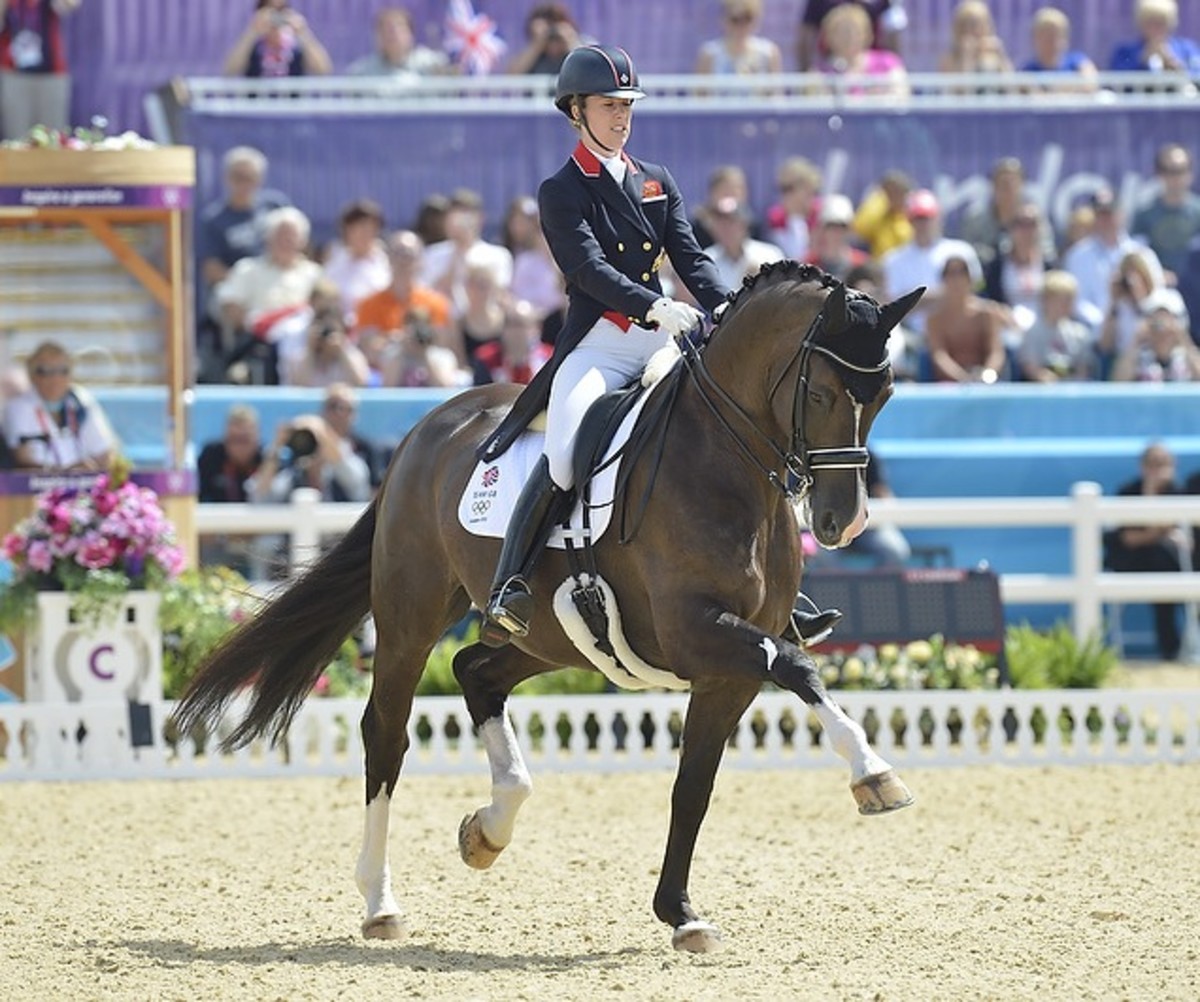Did You Set the Alarm? Top Ten Things to Know about the WEG Dressage Horses
- March 10, 2017
- ⎯ Fran Jurga

Should I just stay up or should I get up super-early?
That’s the dilemma facing dressage fans this week as the Alltech FEI World Equestrian Games gets underway in Normandy. For east coast fans, the start times for the events on the first few days range from 2 to 4 a.m. West coast fans can simply make a very late night of it, and might be able to get to bed by dawn.
Watching live is a challenge, but so is staging a dressage competition that must accommodate 100 horses and riders from 31 nations.
At the end of the first day, the dressage results look as predicted: Germany in first place, followed by The Netherlands and Great Britain. But you won’t yawn if you look at the fine print and learn about some of the horses who aren’t household names.
The Games provided a detailed entry list of all 100 horses, which I combined with a few photos from the first day to show just how this event is different…and why you might want to start setting your alarm and signing up for FEI-TV.

1. The Breeds: Has there ever been such diversity at a dressage event? No less than 24 named breeds are represented, although several are ones you may not have know–national registries such as the Estonian Sport Horse. Gone is the day of supreme domination of the bred-in-Germany sport horse: Dutch Warmbloods tied Hanoverians for the most-represented breed. If the German breeds were combined, they would, of course, dominate, with 51 of 100 horses being listed to a German stud registry, compared to 16 Dutch Warmbloods.
Danish Warmbloods and Oldenburgs tied for second-place behind the Dutch and Hannoverians, followed by Lusitanos, thanks to their heavy domination of both the Portuguese and Brazilian squads.
2. The Stallions: Nothing looks as good on a stallion’s resume as a place on the World Equestrian Games roster. Riders from around the world will be seen on 39 stallions of various breeds, but the majority will not ride them: look for 41 geldings and 18 mares.
3. The Bloodlines: While warmblood breeding lines tend to crisscross borders, first generation statistics show that the dominant sire represented at Normandy in dressage is once again the double-approved Hanoverian and Dutch Warmblood sire De Niro. De Niro had six offspring at London for the 2012 Olympics; he’s down to five in Normandy. Sandro Hit, Michellino, Donnerhall and Jazz have three offspring each.
The first Friesian horse at the World Equestrian Games isn’t from the breed’s native land of The Netherlands. Adelprag Anders is representing South Africa. Photo by Charly Triballeau | AFP via Getty Images 454131352.
4. The First: Baroque fans will be happy to see the Friesian horse from South Africa. Adelprag Anders is paving the way for his breed under South African rider Chere Burger. It’s also the first time that South Africa has had a team for dressage.
5. The Oldest: This statistic made me nostalgic for Russia’s Balagur, the ex-circus horse who finished fifth at Hong Kong in the 2008 Olympics at the age of 18. He was the first of his breed, the Orlov Trotter, to compete, and he had a global fan base. Balagur’s legacy in Normandy is shared by the Brazilian Lusitano stallion Pastor, and the Danish Warmblood gelding Solcos Lacan, ridden by Finland’s Eevamaria Porthan-Broddell. They are also both 18.
Ben Hur Da Broa is the youngest horse to compete in dressage at Normandy. The Lusitano is only eight. (Getty Images #454130858 by Charly Triballeau | AFP)
6. The Youngest: The Lusitanos make the news again. Perhaps you saw the young Lusitano stallion Ben Hur Da Broa for Portugal today. He’s only eight years old.
7. The Mom-Liked-You-Best Pair: It looks like Italy sent two team horses out of the same mare Welt Girl, although they are by two different sires.
8. Follow the Script: Do dressage horses watch classic American movies? The stallion Painted Black, competing for Spain, will be on the same scoreboard as one of his offspring, Wervelwind, who competes for South Africa. Can you imagine the dressage equivalent of a “Field of Dreams” moment?
9. National Unity: All four members of the Dutch team are riding Dutch Warmbloods; two are sired by the Dutch stallion, Jazz. Parzival is a chestnut gelding and Johnson is a bay stallion but both are sons of Jazz.
Tina Konyot’s Calecto V is part of Team USA’s diplomatic collection of horses representing four different warmblood registries. They scored 69.643% today and are in 17th place.
10. The Crossroad of World Dressage Breeding: It surely wasn’t planned but hooray for the USA: Our four riders are atop horses of four different breeds representing three nations: the German Oldenburg (Wizard), the German Westphalian (Legolas), the Dutch Warmblood (Verdades), and the Danish Warmblood (Calecto V).
What statistics have you noticed in the broadcast or compiled on your own? Leave a comment and add to the list!
Disclaimer: Statistics were compiled based on entry data provided by the Games and have not been cross-verified by any breed, national or sport organization. In addition to the statistics listed here, seven horses had no breed listed and two were not identified by gender. — Fran Jurga









